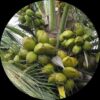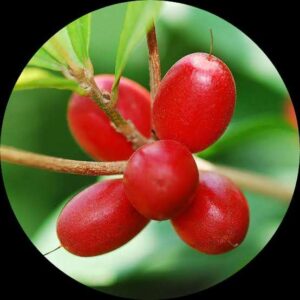- Empty cart.
- Continue Shopping
Gangabondam (Coconut)
Original price was: ₹600.00.₹550.00Current price is: ₹550.00.
Genus : Dwarf
“The Gangabondam (Coconut) Plant is a must-have for coconut lovers. It produces delicious coconuts and adds a touch of tropical beauty to any garden or landscape. Experience the joy of growing your own coconuts with this exceptional plant.”
“Gangabondam” as a commonly used name for the coconut plant. It is possible that it may refer to a regional or local name for the coconut plant in a specific language or region. However, based on the description provided, it appears to refer to the coconut plant, which is also known as Cocos nucifera.
The coconut plant, or Gangabondam as referred to, is a tall, palm-like tree that belongs to the Arecaceae family. It is known for its versatility and is extensively grown in tropical and subtropical regions around the world for its various uses.
Height: A mature coconut plant can reach a height of up to 30 meters (98 feet) or even more, making it one of the tallest trees in the world. The trunk of the coconut tree is usually straight, cylindrical, and thick, with a diameter of up to 60 cm (24 inches) or more. The trunk is covered with a smooth, grayish-brown bark that is marked with prominent leaf scars, which are the remnants of old leaves that have fallen off.
Leaves: The leaves of the coconut plant are large and pinnately compound, meaning they are composed of multiple leaflets arranged in a feather-like pattern. The leaflets can grow to be quite long, reaching lengths of up to 6 meters (20 feet) or more, with a width of around 60 cm (24 inches). The leaflets are dark green in color and have a glossy appearance.
Flowers: The coconut plant produces large, fragrant flowers that are arranged in clusters called inflorescences. The flowers are usually yellowish-green in color and have a unique structure, with both male and female reproductive organs present in the same flower. The flowers are pollinated by insects, particularly bees.
Fruits: The fruit of the coconut plant is the well-known coconut, which is a large, oval-shaped drupe. The coconut has a tough, fibrous outer husk that is typically brown or green in color, and inside it is a hard, woody shell that encases the edible endosperm or “meat” of the coconut. The endosperm is usually white and is surrounded by a clear liquid called coconut water.
Uses: The coconut plant has been used by humans for various purposes for centuries. The fruit, the coconut, is a highly nutritious food source and is used in many culinary preparations around the world. The coconut water is a refreshing drink and is also used for its potential health benefits. Additionally, coconut oil, which is extracted from the fruit, is used for cooking, cosmetics, and medicinal purposes. The leaves are used for thatching roofs, making baskets, mats, and other handicrafts. The trunk of the tree can be used for construction, making furniture, and as a source of firewood.
Overall, the coconut plant, or Gangabondam as referred to, is a versatile and economically important plant that provides a wide range of useful products for human societies around the world. It has cultural significance and is deeply integrated into the daily lives and livelihoods of many communities.













Reviews
There are no reviews yet.